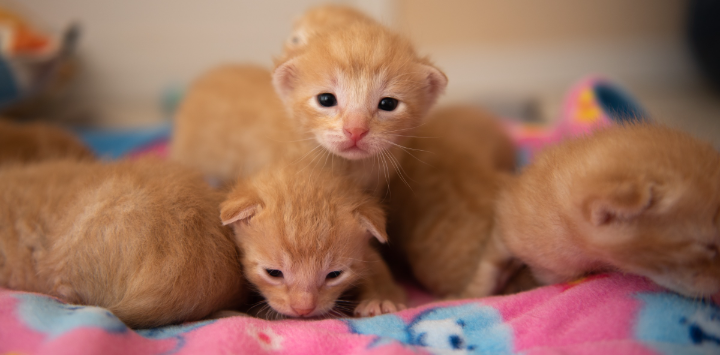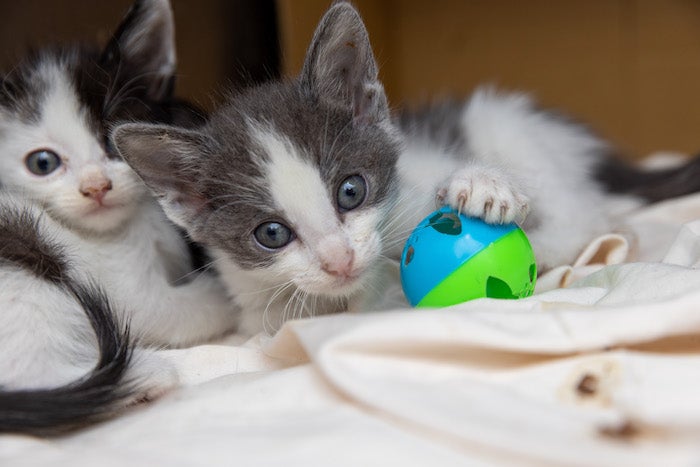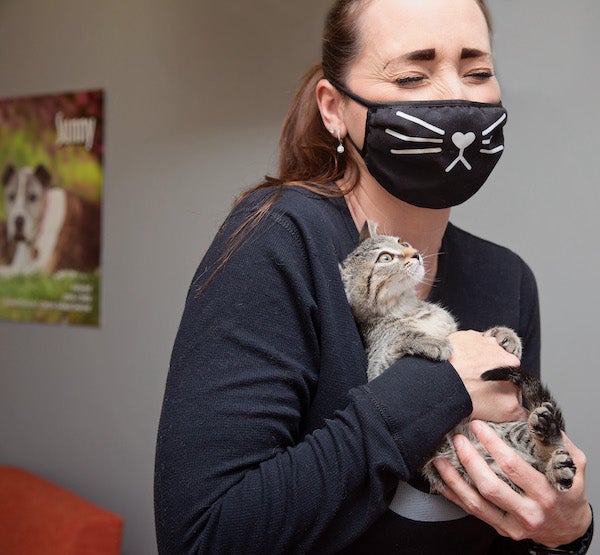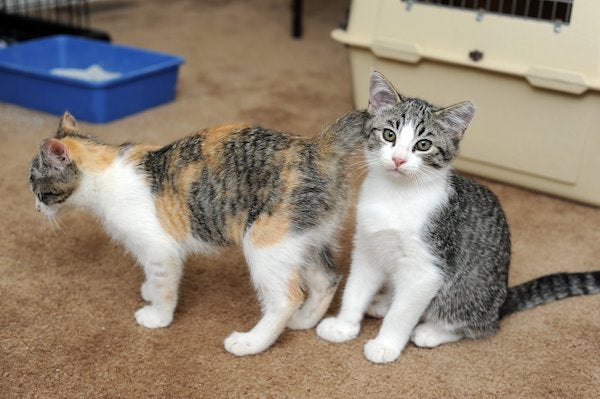
Tackle kitten season head-on by putting a solid foster program in place
May 2, 2023
Ah, kitten season. That time of year (typically March or April through October, depending on your geographic location) when cats’ reproductive cycles kick into overdrive. Since females can get pregnant by the age of 5 months, have an average of 4 to 6 kittens per litter, and are capable of having 3 litters a year, one mama cat could potentially bring up to 18 new felines into the world before kitten season starts again in 2024. That’s… a lot of cats.
 Especially if babies haven’t yet begun flooding into your organization, now’s the time to shore up – or start – your kitten foster program. Each year around this time, we put together new content featuring expert tips on building a successful foster program. In fact, if you search “kitten season” on the site, a slew of podcasts, program spotlights, toolkits, townhalls, and vlogs will pop up focused on this evergreen topic.
Especially if babies haven’t yet begun flooding into your organization, now’s the time to shore up – or start – your kitten foster program. Each year around this time, we put together new content featuring expert tips on building a successful foster program. In fact, if you search “kitten season” on the site, a slew of podcasts, program spotlights, toolkits, townhalls, and vlogs will pop up focused on this evergreen topic.
That’s a lot of information to absorb, so we’re sharing a few of the highlights from our resources below. You’ll also find links to the full list at the end just in case you can carve out the time to read, listen, or watch them in their entirety.
- Curb the volume. Get ahead of the stampede by advising your community that not all kittens need to come to the shelter for help. Organizations like Jacksonville Humane Society regularly run their “Don’t Kit-nap Kittens” campaign around this time of year to cut down on the number of very young babies being brought in by Good Samaritans.
- Convert finders to fosters. For those people who do show up with kittens, ask them to foster – preferably until the babies are old enough for spaying or neutering and adoption. Don’t miss this opportunity to ask them to take home a few humane traps and catch the parents for spay/neuter, too. Encourage fosters to find homes for the kittens on their own once they’ve been properly vetted.
 Be flexible. People who think they must foster for several months may not commit, but even a short-term foster period will give you time to find an alternative. Set up a “fosters on deck” list of seasoned volunteers who can pick up kittens in a pinch or step in when others can’t hang onto their foster babies.
Be flexible. People who think they must foster for several months may not commit, but even a short-term foster period will give you time to find an alternative. Set up a “fosters on deck” list of seasoned volunteers who can pick up kittens in a pinch or step in when others can’t hang onto their foster babies.
- Invest in kitten kits. Make it easy for people to say “Yes” to fostering by having kitten kits at the ready. Cost varies, but a basic kit can include powdered formula, bottles and syringes with miracle nipples, and a warming disk or hot water bottle with a fleece cover. Include a guide on caring for kittens (consult the resources at the end of this piece for examples).
- Track milestones. Healthy kittens must stay hydrated, warm, and well-fed, and gain weight steadily. But babies have other important milestones, too, like learning to explore their surroundings and play. Educate new fosters on kittens’ social needs in addition to their physical ones.
- Use mentors. It’s stressful and emotional to foster kittens, especially very young ones. Enlist your longer-term foster volunteers to sign up for mentoring shifts, during which time they can be on call to provide help and support. Set up a private Facebook group where experienced fosters can answer questions quickly when people have concerns or issues.
- Be forthright. The sad fact is that some kittens don’t survive. Even the most skilled caregiver experiences this at some point during their foster career. Prepare volunteers in advance, provide them with resources on compassion fatigue, and encourage peer-to-peer support. And make sure they understand that it’s worth the risk in the end: “It’s awful to lose kittens, especially ones that you've put so much work into by feeding them every two or three hours,” says Esther Neonatal Kitten Alliance founder and executive director Andee Bingham. “But it's important for people to understand that without fosters, 100% of these kittens would die.”
For more information about setting up a successful kitten foster program, check out the following resources:
Program Spotlights
- Kitten kits help the public participate in lifesaving
 Onset of kitten season combined with shelter limitations leads to creative solutions
Onset of kitten season combined with shelter limitations leads to creative solutions- Tricks of the trade: Best Friends cat expert shares neonatal care tips for foster
The Best Friends Podcast
- Episode 99 - Kitten season is coming!
- Episode 58 - Community-supported kitten care
Saving America's Pets Vlog
- How to help orphaned kittens with the Kitten Lady
- Kitten season: when cute and cuddly meets lifesaving
Other Best Friends Network Resources
- Neonatal kitten toolkit
- The kittens are coming! Preparing your foster program ahead of kitten season
- Fuzz, fluff and fun: Foster to save lives this kitten season

Liz Finch
Senior Writer
Best Friends Network
If you enjoyed this program spotlight, you can find our complete catalog of spotlights here.